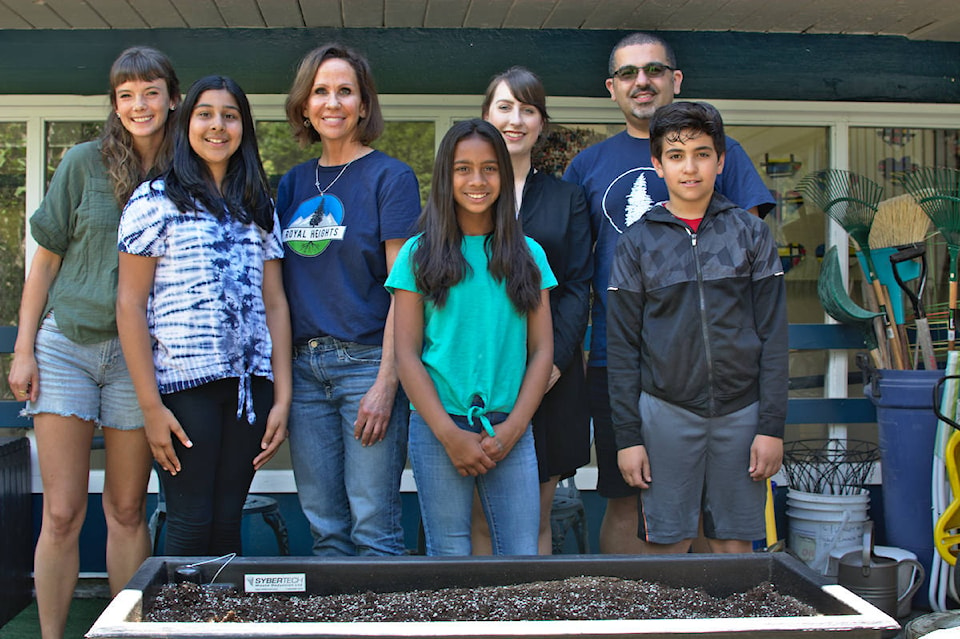When Lauren Bernardi first saw the job title “Community Animator – Surrey Regional Hub,” she didn’t quite know what to make of it. She said the name, for a position with Farm to School BC, began to make more sense once she actually started in the role.
“When I first saw the title, I kind of thought, okay, like, animation, bringing things to life, that makes sense when it comes to growing food,” she said. “But I didn’t know until I started in the role that it’s more about bringing to life the connections between people.”
Since February, Bernardi has been facilitating relationships to growing food in five schools across the city, as Surrey’s first community animator. The schools—Fleetwood Park Secondary, East Kensington Elementary, Georges Vanier Elementary, Cindrich Elementary and Royal Heights Elementary—were awarded grants from Farm to School through the Ministry of Health.
Farm to School is a non-governmental program of the Public Health Association of BC that focuses on growing food literacy, in many cases by helping schools to implement outdoor gardening spaces and by promoting hands-on learning experiences with edible plants.
Laura Ristock, Surrey Schools development officer, said Farm to School’s interest in starting a partnership was brought to her attention because the district’s breakfast program is a part of her portfolio.
“We have 60 different breakfast programs in the district that help children who need to have something in the morning to eat each day, when they’re not always receiving it at home. So, because that was all in my portfolio, that’s kind of how this came into play, knowing that we’d be able to grow this produce and harvest and supplement the program,” she said.
District staff then figured out which schools were going to be the most prepared and interested in the program, according to Ristock.
Three Grade 5 students at Royal Heights Elementary, an inner-city school, wrote a letter as part of their grant process.
“I think we mostly wrote about why we really, really want this,” 10-year-old Saiya Parmer said. “We want this garden to build our community so grades from kindergarten to grade seven can all come together and work in this environment together—as one community.”
After the school was selected to receive the funding, Bernardi helped staff and students to install seven large, self-watering planter boxes. Last week, the boxes were planted with sunflower seeds to aid the local bee population, along with the main ingredients of a future potato bake this fall.
Royal Heights principal Catherine Hanna said having someone young and cool digging in the dirt is inspiring for her students.
“For you to be here and that you cared and that you were lining up and helping them think about what they were doing—I think that connection will be really powerful,” she said.
“I’d love to be more a part of that,” Bernardi replied.
“Oh, we will keep inviting you,” Hanna said.
The relationship between Bernardi and the district has been great so far, said Ristock, who oversees the funding of research and development for Surrey Schools.
“She really helps me get to know the schools a bit more in relation to their garden and how she sees a vision for this moving forward,” Ristock said. “I mean, we were just talking about the fact that she was here last week, helping them plant the garden, which I think is so amazing because for a lot of the teachers in the schools, they might have some background when it comes to gardening, but not extensively. So, I think it really helps to have an animator like Lauren be able to share her expertise with them.”
At first, Ristock received a lot of questions about what the community animator would be doing—would she be making videos? “But no, I think it’s just obviously being involved with the schools and helping this garden come to fruition and using her background and expertise to make that happen.”
Bernardi said her first couple months in the role has been motivating in a time where the negative impacts of human activity on the environment is omnipresent. And having kids connect to the process of growing food, to keep their spaces clean and protect them, fosters a sense of stewardship for the land.
“It’s not just about the food, it’s about all the movements that happen behind food; it’s the connections with other community organizations; it’s interconnections between the schools; it’s the connection between school district and school,” Bernardi said. “So there’s lots of different connections that need more energy and more life given to them to help make the garden a success.”
